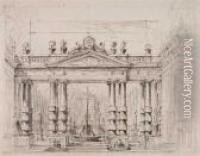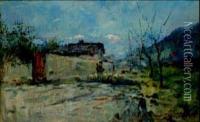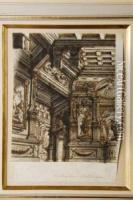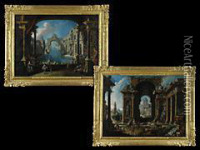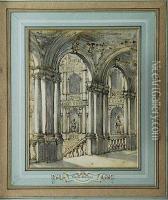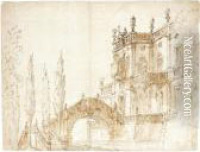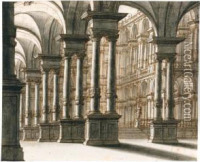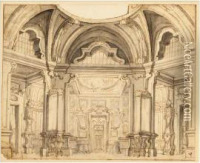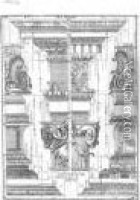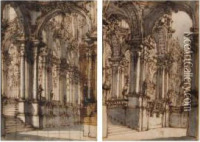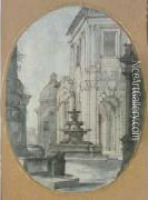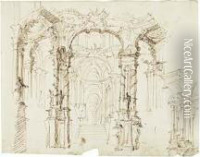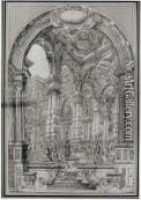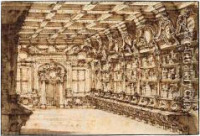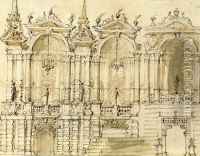Ferdinando Galli Bibiena Paintings
Ferdinando Galli Bibiena was an Italian Baroque-era artist, architect, and stage designer, born in 1657 in Bologna, Italy. He was part of the distinguished Galli-Bibiena family, which included several generations of artists and theater designers who played a significant role in the development of scenic design and Baroque architecture in Italy and across Europe.
Ferdinando was the son of Giovanni Maria Galli, who was also known as Bibiena, and he was trained by his father in painting and stage design. He quickly made a name for himself in the world of theater, creating elaborate and innovative stage sets that were renowned for their use of perspective and their ability to create the illusion of depth and grandeur.
In addition to his work in theater, Ferdinando was also a skilled architect. He designed a number of buildings and interiors, applying the grandiose and elaborate style characteristic of the Baroque period. His architectural works include the design of the Margravial Opera House in Bayreuth, Germany, which is considered one of his masterpieces and is now a UNESCO World Heritage site.
Galli Bibiena's influence extended beyond Italy as he worked in various parts of Europe, including Germany, where he served at the court of the Elector Palatine in Düsseldorf. His style was marked by the dramatic use of light and shadow, and his stage designs often featured complex architectural elements that were designed to be altered quickly during performances to create different scenes.
Ferdinando Galli Bibiena was also an author and teacher. He wrote several treatises on perspective and stage design, which were widely read and influenced subsequent generations of artists. His work as a teacher helped to disseminate his innovative techniques and ensured that his influence would continue after his death in 1743.
Throughout his career, Ferdinando Galli Bibiena was celebrated for his artistic innovation and his ability to blend architecture, painting, and theater into a cohesive and impressive whole. His legacy is reflected in the continued admiration for his stage designs and architectural works, and he remains an important figure in the history of Baroque art and design.

